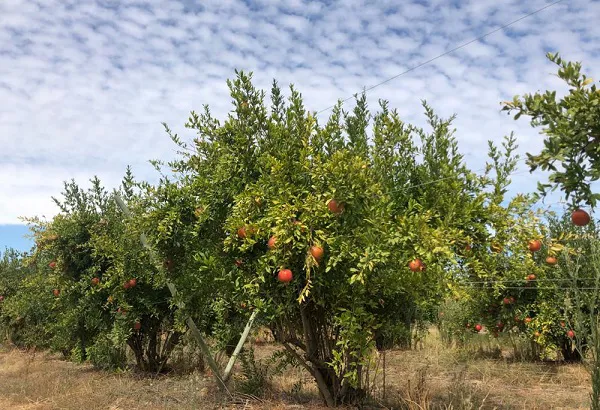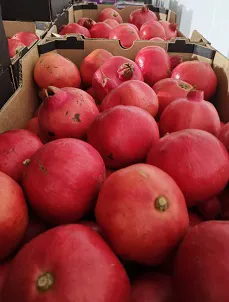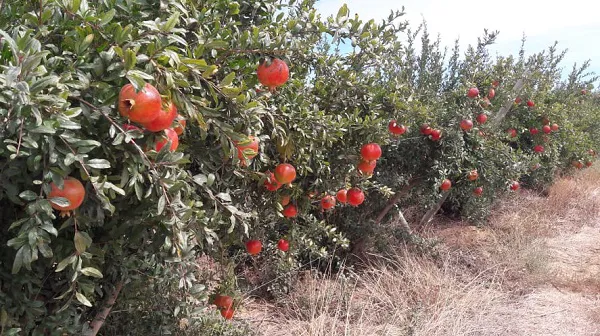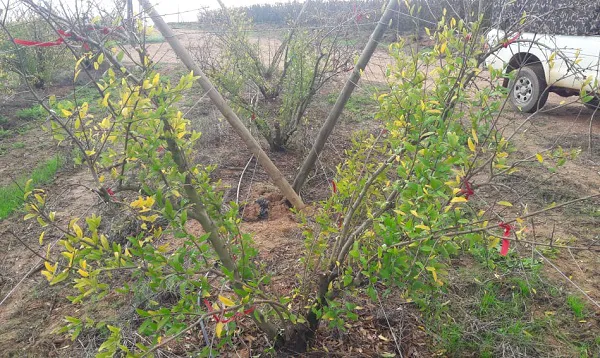The first South African pomegranates of the season are arriving in Europe and the Middle East, early variety pomegranates, mostly Herskovits and Acco.
The harvest of Wonderful pomegranates are getting underway this week in the Western Cape (home to the majority of south Africa’s pomegranate production). The impact of the drought Is unfortunately still being felt, notes Carnel Geddes, chairperson of POMASA, pomegranate industry association of South Africa, particularly in sizing.
 Pomegranate orchard outside Wellington
Pomegranate orchard outside Wellington
Among the early cultivars there’s a 30% component of large fruit and 70% of medium or small size, a fact that has been complicating the marketing of the early fruit, although, she notes, “everything finds a home.”
They’re hoping for larger fruit on the Wonderful, fruit that have been hanging approximately three weeks longer, a cultivar from which they usually can expect larger sizing.
It’s too soon to tell what prices the fruit sold on consignment on the European markets will achieve. Fruit from Peru and India is also starting to arrive in Europe.
Week’s wind delays in harbour but better cold storage flow The early shipments left South Africa on time, but fruit that was meant to be sent out last week was delayed due to wind.
The early shipments left South Africa on time, but fruit that was meant to be sent out last week was delayed due to wind.
The delay will probably be felt about two weeks hence, she reckons, but at least there is more cold storage space available than last year, which has been a relief.
The bulk of South Africa’s pomegranate export, both for retail programmes and on consignment, is whole fruit, class 1 packed in 3.8kg cartons.
Pomegranate processing is a large market and of that segment, exports versus local processing make up roughly equal parts.
“You can achieve good price levels with pomegranates but the packaging cost has become very expensive.”

Early northern pomegranates could alter Cape’s start
Most pomegranates are grown in the Western Cape but there’s new expansion underway in Limpopo Province where producers would hope to get in the market not long after new year, a development that might mean the end for some early varieties, she reckons. There could be more pomegranate expansion in the north of the country than POMASA may be aware of, as many of the orchards are still too young to bear export fruit.
In the Cape, some pomegranate orchards are trellised, for yield, quality and colouring benefits, and very few orchards are under net, partly due to the high expense, and partly, she says, because the effect of nets – their colour, height, angle – on pomegranates is yet uncertain.
 A trellised pomegranate orchard in the Cape
A trellised pomegranate orchard in the Cape
There exists a body of international research that suggests that covering pomegranate orchards has a long term detrimental effect on the fertility of trees. They aim to conduct a grower survey to collect information from their members who have covered their orchards.
For more information: Carnel Geddes
Carnel Geddes
POMASA
Tel: +27 21 870 2900
Email: carnel@pomegranatesdirect.com
https://www.sapomegranate.co.za/
